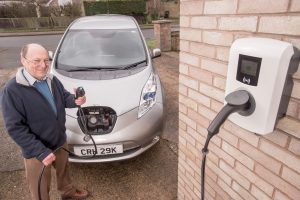Underground cables are often weak points in electricity distribution networks. Unexpected failures cause blackouts. Plus faults that develop in cables and pipes under roads and pavements are difficult to locate and expensive to fix. But AI is starting to prove a game-changer, with its ability to predict and prevent faults, long before they develop into actual failures.
Cable issues at the low voltage end of the grid cause 80% of all faults at distribution level, and are responsible for high levels of customer complaints and periods when they are without power. A disproportionate share of ongoing network costs is devoted to finding and fixing them – far more than with problems which occur in high voltage overhead lines.
Prevention better than cure
The application of AI to predict and prevent cable failures means it is now possible to identify, locate and classify abnormal activity in buried cables, in terms of probability of failure, with unprecedented accuracy. Not just cables and joints where failure is imminent – also those where there are previously undetectable signs of faults developing that will inexorably develop into failures, long before fuses are tripped.
To use a medical analogy, it’s the difference between diagnosing a disease when the symptoms are already making the patient ill and putting their lives at risk, and being able to predict a malady pre-symptomatically and intervene early, so the patient remains healthy, monitoring the network’s heart beat.
Why cables fail
Some cables failures are obviously caused by sudden mechanical damage, for example when they are severed by a digger. Those are easy enough to diagnose and repair. But in most cases, problems develop over time, as joints weaken, insulation starts to break down and water gets in.
Several technologies have been developed to identify when the progression towards failure is at an advanced stage i.e. when cables are actively arcing, overheating and/or giving off gases as insulation breaks down. Fuses could be tripping, but they may still be carrying power, as faults are often intermittent. However, at this point, there is a high risk that they will fail suddenly and catastrophically. And accurately identifying the location of the fault has required an additional set of technologies, time, effort and expense – until the advent of AI.
AI uncovers all
The AI solution uses two sensors on a low voltage network to capture waveforms. The waveforms record all activities on the network, including transient pre-fault events. These are automatically analysed using AI algorithms, which identify activities that are signs of developing faults, including water ingress, mechanical failure of joints and insulation breakdown – each of which exhibit distinctive spikes, peaks and troughs, even in their very early stages.
The system’s analyses become progressively more accurate, as its learning increases with each scan. It can discriminate between abnormal activities in terms of whether or not they are likely to lead to failure at some point in the future, and filter out activities which are of no consequence – just noise or normal loads. The technology is also moving rapidly to a level where it will be able to give an accurate prediction of the date when a developing fault is likely to result in a failure.
The proof of the pudding
Initial trials over the last two years showed the AI approach could identify pre-faults that would lead to failures with an accuracy of up to 95%. When cables where the system identified pre-faults were dug out, there was obvious physical degradation in some cases. In others, there was no apparent problem visually – but splitting the cable revealed internal issues, exactly as flagged. Pre-faults were confirmed in every case.
Trials also proved the AI solution could locate pre-faults geographically to within 3 metres, compared with older technologies that were accurate to only 10-20 metres. Accuracy of prediction and location are both improving as the system learns more, so the cost and environmental disruption of digging exploratory trenches is being greatly reduced.
Avoiding costs and catastrophes
The immediate financial implications of deploying AI to predict and prevent cable failures are plain to see. An unplanned low voltage cable repair typically costs £5,000, plus disruption to customer service. A planned repair typically costs £1,500, with minimal disruption, and can be scheduled and budgeted for as part of a measured asset management strategy.
But far from being simply a find-a-fault solution, part of the potential of AI is that it can create virtual models of whole networks and monitor their health continuously, learning and improving in accuracy as it goes. It can also create multiple ‘what if?’ scenarios and model the consequences of failures. But above all, it accurately analyses and reports the root causes of faults. This is in marked contrast to more basic fault-finding technologies, where the causes may remain unknown, leading to repeated faults.
The use of AI and deep machine learning to interpret waveforms is currently being rolled out to predict and prevent faults in low voltage underground cables, because their vulnerability to failure has a disproportionate effect on the cost and reliability of the grid. But work has already begun on extending AI’s application to medium and high voltage elements of the grid, this could include submarine power cables, renewables connections and any part of the underground critical power infrastructure – where the industry term ‘catastrophic failure’ truly can spell catastrophe.


